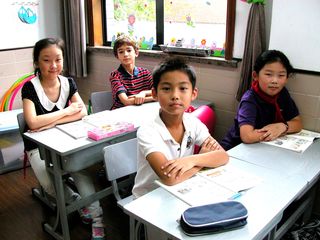Education
US Students Continue to Lag in PISA 2018 Results
Here's what parents, teachers, and legislators need to know.
Posted December 3, 2019 Reviewed by Kaja Perina

The Programme for International Student Assessment (PISA) is a survey given to 15-year-old students around the world every three years, which tests the core subjects of reading, mathematics, and science. In 2018, 79 countries and economies participated, representing about 32 million 15-year-olds.
Here is what US parents, teachers, corporate leaders, legislators, and anyone else who cares about education and the future of our country must know.
- Our US scores show that our education system is flatlining. We are not keeping up with our global counterparts, though the world is becoming increasingly interconnected and interdependent. We performed slightly above the OECD average in reading and science (our scores have remained unchanged in almost two decades while our counterparts' scores rose) but performed well below average in mathematics.
- “Mathematics is an area where American students have always struggled… [they are] significantly below the OECD average… performance overall is quite steady,” said Andreas Schleicher, Division Head of the OECD PISA. I believe that we must require teachers who majored in mathematics or even with graduate degrees in mathematics in our classrooms to stem our falling math outcomes. And, we must depend less on technology to teach our children math. Last, yes they must learn basic mathematics by rote instruction and memorization. There is no excuse for the US when students in Beijing-Shanghai-Jiangsu-Zhejiang (B-S-J-Z) performed near four grade levels ahead of US students in mathematics. B-S-J-Z represents a population of 184 million, half of that of the United States!
- “The 10% most disadvantaged students in Beijing-Shanghai-Jiangsu-Zhejiang (B-S-J-Z) or in Macao or Estonia… those students actually do as well or better than the average student in the US. So clearly some countries do better with their disadvantaged students, where you see less variability with students from the most privileged backgrounds,” said Andreas Schleicher.
- Our productivity is below the OECD average and must be improved. This measures the time spent learning versus learning outcomes. Finland, Germany, Switzerland well outperform the US, for example. The bottom line is the US must analyze the quality of our instruction versus the quantity of learning time spent.
- “Where students saw more teacher enthusiasm, they also talked about a better disciplinary climate and also more perseverance to motivate complex tasks… Teacher enthusiasm is related to learning outcomes but also to the general school and disciplinary climate in the classroom,” said Andreas Schleicher.
- The following teacher behaviors hinder learning and reading performance: not meeting the individual needs of students, teacher absenteeism, staff resisting change, teachers not being well prepared for class, teachers being too strict with students. These factors are directly related to student learning outcomes.
- Students’ life satisfaction: Where there was a better disciplinary climate, students were happier with their lives even after accounting for social background. When there was a more cooperative learning style, students were more satisfied. The US has a more competitive learning environment than cooperative. The US ranks almost last in this category, well behind countries like Japan and China, against the common US perception. I believe this is in part due to our opaque college admissions system (the Varsity Blues scandal being emblematic) and our increasingly extreme capitalism.
- In the US, while both boys and girls may do equally well in science and math, if you are a boy you are much more likely to work as a science and engineering professional than if you are a girl. We practice gender aspirations by subject areas. This must change.
- If you go to Beijing-Shanghai-Jiangsu-Zhejiang (B-S-J-Z), those students from disadvantaged backgrounds have an even higher growth mindset than do students from privileged backgrounds! Not so in the US. We must learn in the US that a “can do” mindset determines our academic success and our emotional health.
- The idea of “academic resilience.” How you can perform despite coming from disadvantage? The US lags well behind. And it relates to growth mindset, because this is correlated with parents' emotional support, teachers’ enthusiasm, self-efficacy, disciplinary climate in the schools, and with a growth mindset. These are factors that predict resilience among immigrant students.
- Holding a growth mindset is positively related to better academic performance in almost every education system. This is especially true for 15-year-old students in the United States. Students who disagreed or strongly disagreed with the statement: “Your intelligence is something about you that you can’t change very much” scored 58 points higher in reading than students who agreed or strongly agreed with the statement, after accounting for students’ and schools’ socio-economic profile (OECD average: 32 score points higher).”
- Social segregation takes place across our US public schools and there is comparatively great variability among our public schools. Again, this represents our funding model which results in inequitable educational experiences.
- The US is not good with aligning resources with needs.
As I discussed with Fareed Zakaria on Sunday, December 3rd from my personal and professional findings discussed in World Class, we must address:
- Our funding model and how to make it equitable
- Raising our teacher training and professional development standards
- Having higher expectations and a growth mindset
PISA Related Links:
References
OECD (2019) Programme for International Student Assessment. https://www.oecd.org/pisa/.


